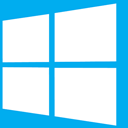Windows 10 Enterprise LTSC Alternatives

Windows 10 Enterprise LTSC
With the LTSC servicing model, customers can delay receiving feature updates and instead only receive monthly quality updates on devices. Features from Windows 10 that could be updated with new functionality, including Cortana, Edge, and all in-box Universal Windows apps, are also not included. Feature updates are offered in new LTSC releases every 2–3 years instead of every 6 months, and organizations can choose to install them as in-place upgrades or even skip releases over a 10-year life cycle.
Microsoft is committed to providing bug fixes and security patches for each LTSC release during this 10 year period.
The Long Term Servicing Channel is not intended for deployment on most or all the PCs in an organization. The LTSC edition of Windows 10 provides customers with access to a deployment option for their special-purpose devices and environments. These devices typically perform a single important task and don’t need feature updates as frequently as other devices in the organization. These devices are also typically not heavily dependent on support from external apps and tools. Since the feature set for LTSC does not change for the lifetime of the release, over time there might be some external tools that do not continue to provide legacy support. See LTSC: What is it, and when it should be used.
Best Windows 10 Enterprise LTSC Alternatives
Need an alternative to Windows 10 Enterprise LTSC? Read on. We've looked at the best Windows 10 Enterprise LTSC alternatives available for Windows, Mac and Android.

MerOS
FreeOpen SourceLinuxNix Package ManagerDockerMerOS is a user friendly, good looking, general purpose Nix based GNU/Linux distro. It is ideal for those who want the most out of their computers, a well-designed...
Windows 10 Enterprise LTSC Reviews
Add your reviews & share your experience when using Windows 10 Enterprise LTSC to the world. Your opinion will be useful to others who are looking for the best Windows 10 Enterprise LTSC alternatives.